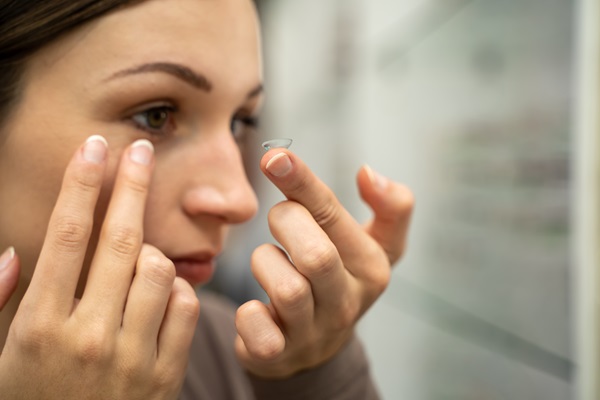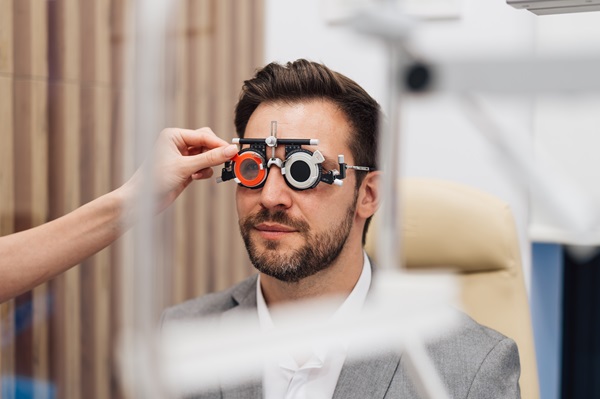How Does an Optometrist Treat Glaucoma?

Glaucoma is the second leading cause of vision loss in the United States. It is an eye condition that damages the optic nerve, leading to severe vision loss and blindness. Fortunately, early detection and treatment can protect your eyes against this serious eye condition. Optometrists can diagnose and treat glaucoma through multiple tests during a comprehensive eye exam. At Texas Optical, our team can help you manage and treat glaucoma, ensuring that your eyes remain healthy in the years to come.
What is glaucoma?
Glaucoma is a group of eye diseases that damage the optic nerve. The optic nerve transmits visual information from the eye to the brain. This damage is often characterized by increased intraocular pressure (IOP); however, in some cases, it can occur when IOP is within the normal range. Most patients with glaucoma experience no signs or symptoms before they begin to lose their vision.
Types of glaucoma
There are two main types of glaucoma:
Primary open-angle glaucoma (POAG)
The most common type of glaucoma is primary open-angle glaucoma (POAG), or wide-angle glaucoma. While the drain structure in the patient's eye — the trabecular meshwork — looks normal, the fluid does not flow out as it should. This type of glaucoma progresses slowly and is often asymptomatic until it reaches an advanced stage, moving from one's peripheral vision to the central vision.
Acute angle-closure glaucoma
This type of glaucoma is also known as chronic angle-closure or narrow-angle glaucoma. Acute angle-closure glaucoma occurs because the eye does not drain as it should due to the drain area between the iris and cornea being too narrow. This can cause a sudden buildup of eye pressure, leading to farsightedness and cataracts.
Diagnosing glaucoma by an optometrist
One of the first and most crucial steps in treating glaucoma is getting an accurate diagnosis. Optometrists are often the first healthcare professionals to detect the signs of glaucoma during a comprehensive eye exam. The eye care professional will use drops to dilate the patient's pupils and examine their eyes. They will check the optic nerve for signs of glaucoma, taking photos as needed so they can observe any changes at the next exam.
Then, they will do a tonometry test to check the patient's eye pressure. This test may be a non-contact tonometry assessment, which uses a puff of air to flatten the cornea. While not entirely accurate, it is a simple screening tool before using a more in-depth assessment option, such as applanation or electronic indentation tonometry tests.
The optometrist may also perform a vision field test to assess if the patient has lost peripheral vision. Detecting visual field defects is essential for diagnosis and monitoring the glaucoma's progression. If the optometrist suspects glaucoma, they may order special imaging tests to get a better view of the patient's optic nerve.
How an optometrist treats glaucoma
Once the optometrist diagnoses the patient with glaucoma, they can utilize various treatment options to manage the condition and prevent further vision loss. The choice of treatment depends on the type of glaucoma, the severity of the disease, and the patient's specific needs. Here are some common treatment methods that optometrists use to treat glaucoma:
Prescription eye drops
Prescription eye drops can lower liquid in the patient's eye or increase its flow, relieving pressure against the optic nerve. However, they include side effects, such as:
- Allergies
- Redness
- Stinging
- Irritation
- Blurred vision
Some glaucoma eye drops can also affect the cardiovascular system. It is important to tell the optometrist about coexisting medical issues or current medications. Some patients may find it difficult to follow a treatment regimen of two or three different eye drops. Be sure to tell the optometrist of any side effects or difficulty maintaining the treatment.
Oral medication
In some cases, the optometrist may prescribe the patient oral medication. These medications may include a beta-blocker or carbonic anhydrase inhibitor. They can improve eye drainage or slow the creation of fluid in the patient's eye.
Laser surgery
Optometrists may use laser procedures like selective laser trabeculoplasty (SLT) or argon laser trabeculoplasty (ALT) to improve the drainage of fluid from the eye (open-angle glaucoma) or stop fluid blockage (angle-closure glaucoma). These procedures can effectively lower IOP and are typically considered before more invasive surgical options.
Surgery
A trabeculatomy is an outpatient microsurgery where the optometrist cuts the white part of the patient's eye to remove some of the tissue. This creates a new channel to drain the fluid and relax eye pressure. They may also implant a tube to help drain fluid.
In severe cases of glaucoma, some patients may need to undergo this surgery more than once. Side effects and complications of the procedure include bleeding and infection. It may also lead to temporary or permanent vision loss.
Do not let your vision fade away
Regular eye exams and early detection are key to detecting and successfully treating glaucoma and maintaining vision health. Do not let your vision fade away. If it has been a while since your last exam, call Texas Optical to schedule an appointment.
Request an appointment here: https://www.texasoptical.net or call Texas Optical at (214) 771-7333 for an appointment in our Dallas office.
Check out what others are saying about our services on Yelp: Read our Yelp reviews.
Recent Posts
A contact lens exam is slightly different from an eyeglass prescription exam. Though both correctives are great for helping you see clearly, contact lenses can be a better fit for certain individuals, such as those who live more active lifestyles. Take a closer look at what you can expect during your upcoming examination.A general eye…
Regular eye exams are crucial for maintaining overall health for people of all ages. By establishing a relationship with an optometrist, you not only protect and enhance your vision but also safeguard against potential health issues. This comprehensive guide highlights the benefits of maintaining a connection with our office, a practice that benefits everyone in…
Your eye health is an essential part of your overall health. Regular checkups with an eye doctor can often prevent many eye issues and complications, catching them in their early stages. Here are three key signs that it might be time to visit an eye doctor.Eye discomfort can appear in many ways. While occasional eye…
Proper vision care can address eye strain and reduce its uncomfortable symptoms. An optometrist will also help to prevent future eye strain. Thus, while there are many ways to strain your eyes, there are many changes you can make to give them a break.Straining the eyes can bring all sorts of symptoms. As a result,…


